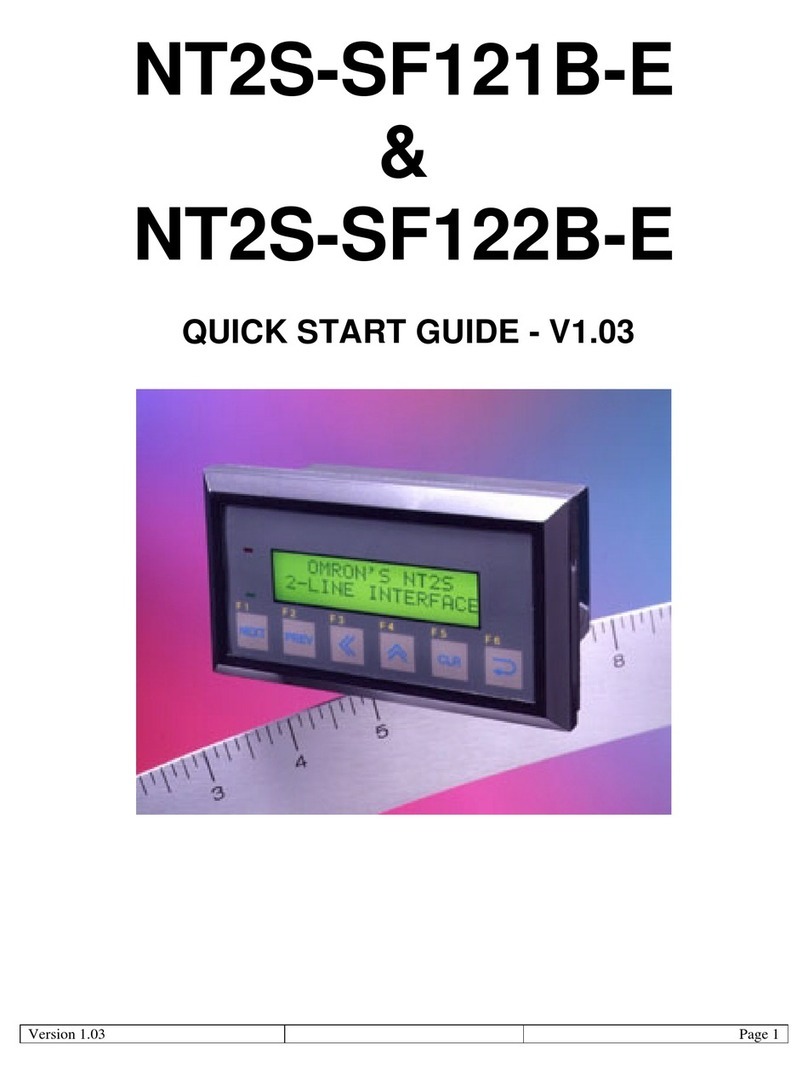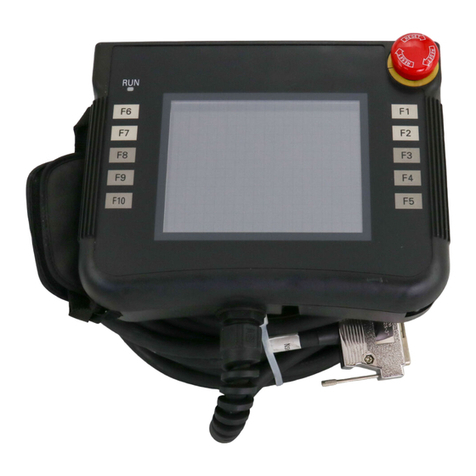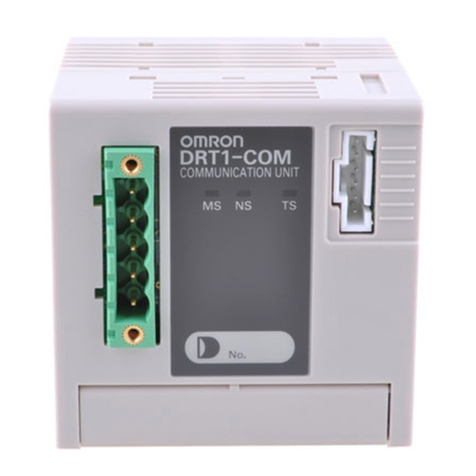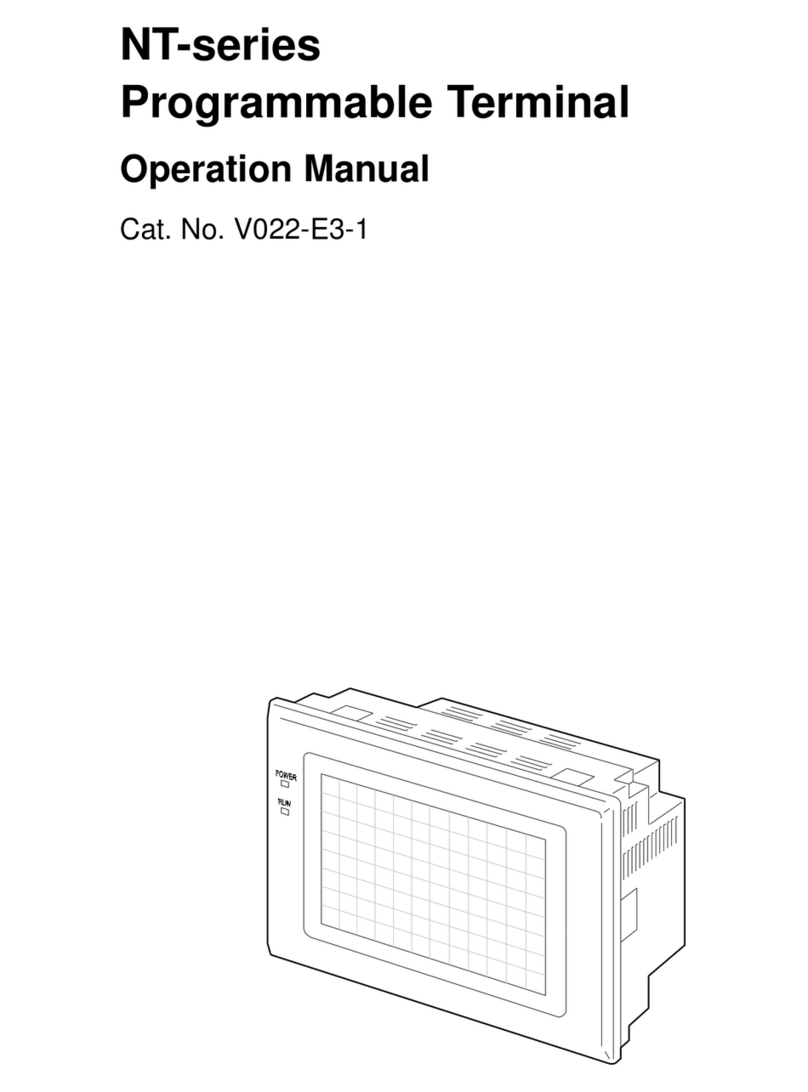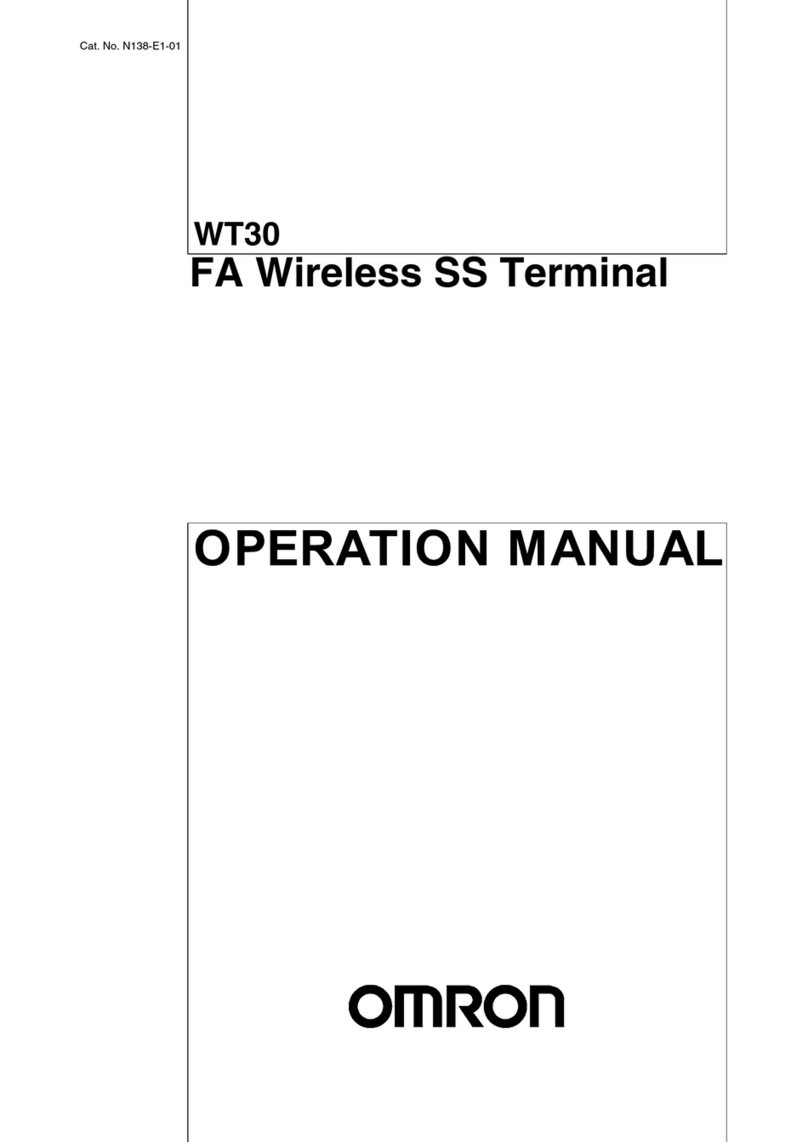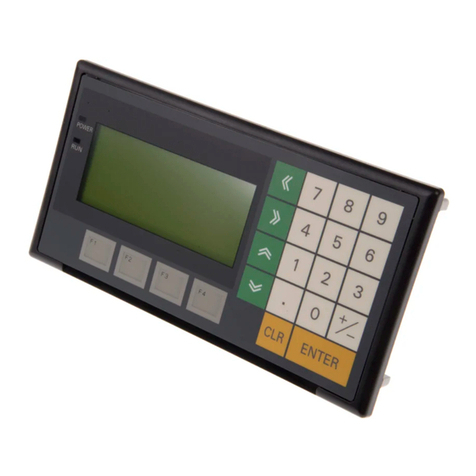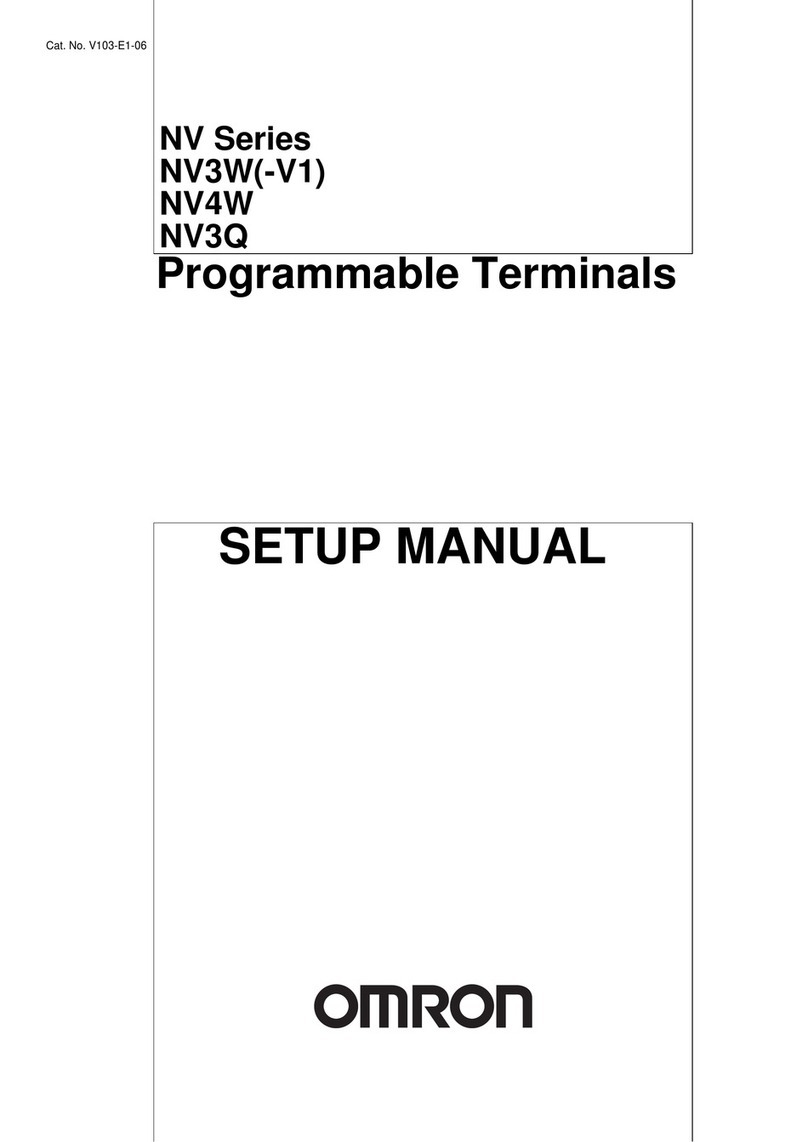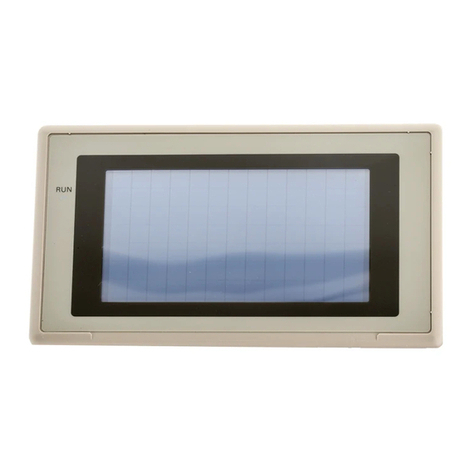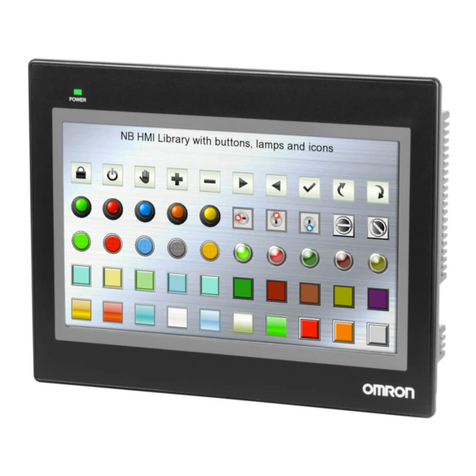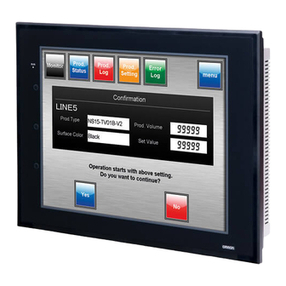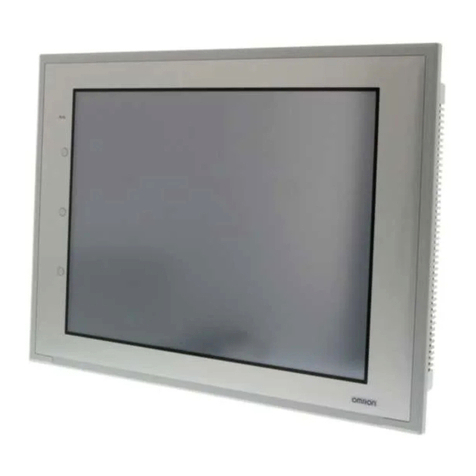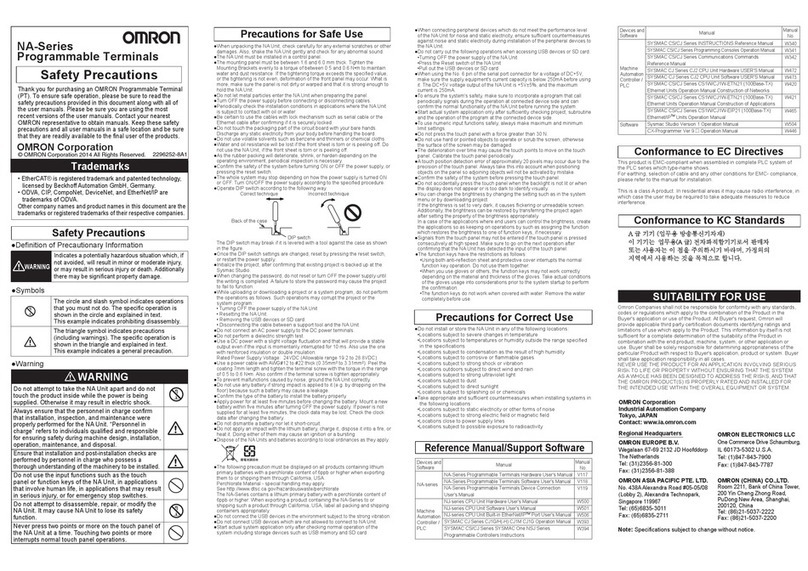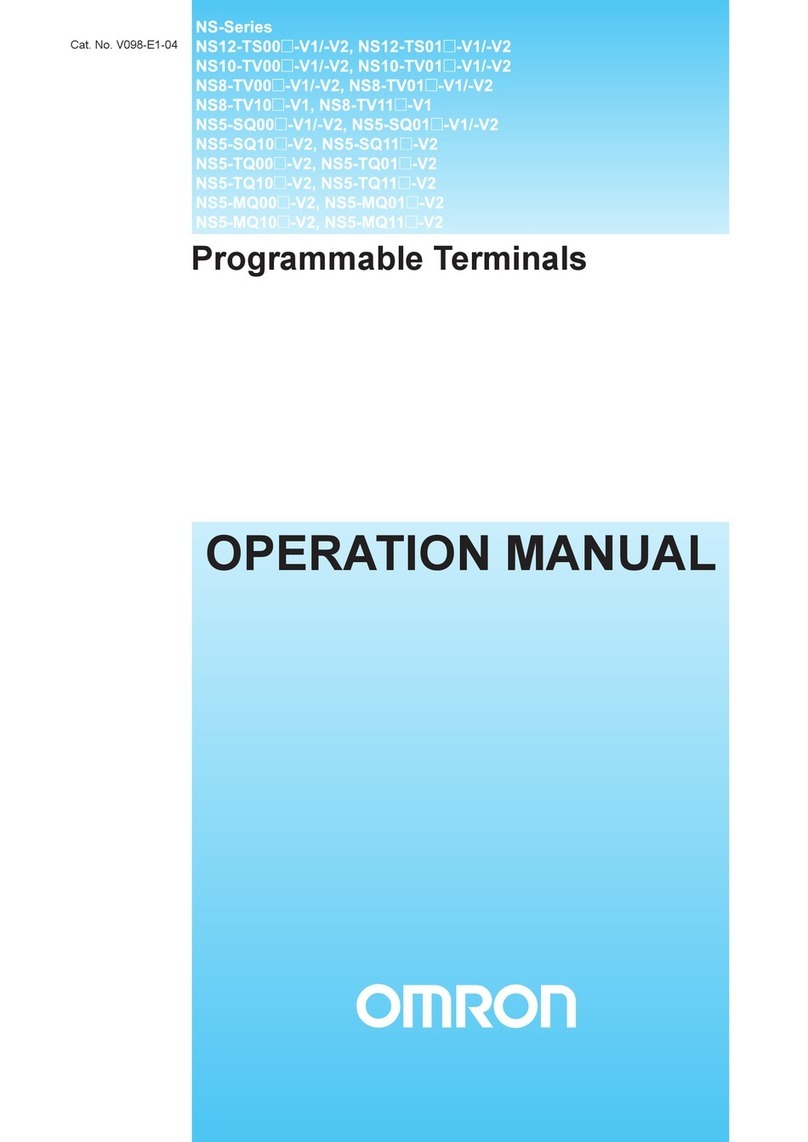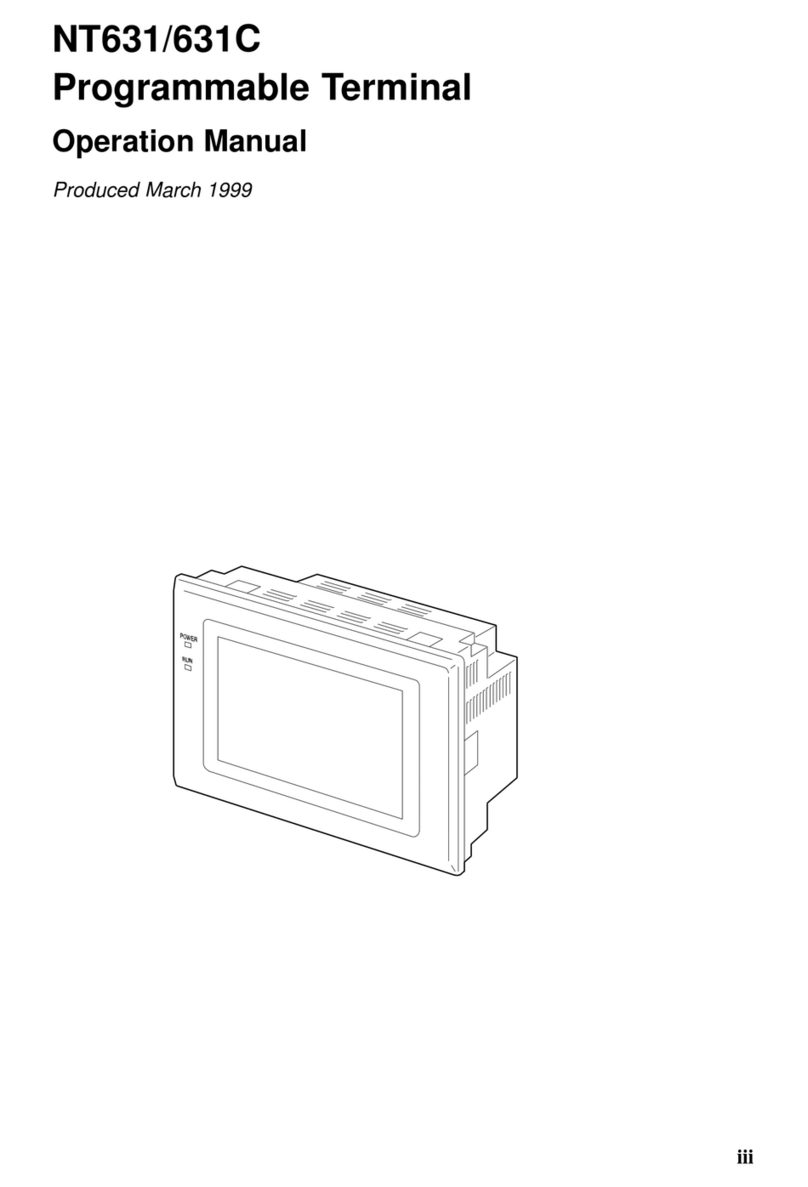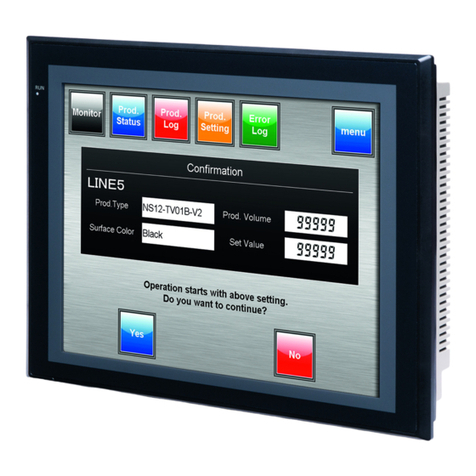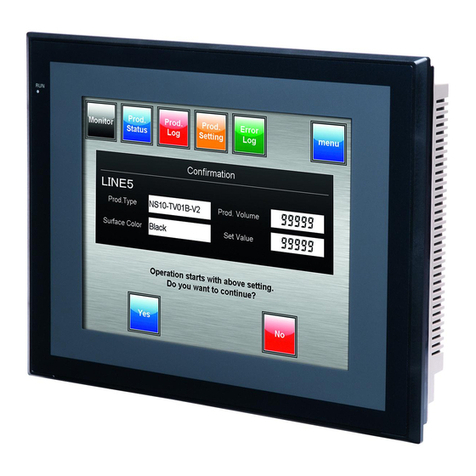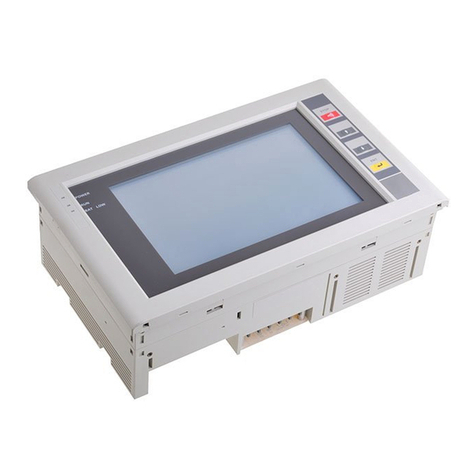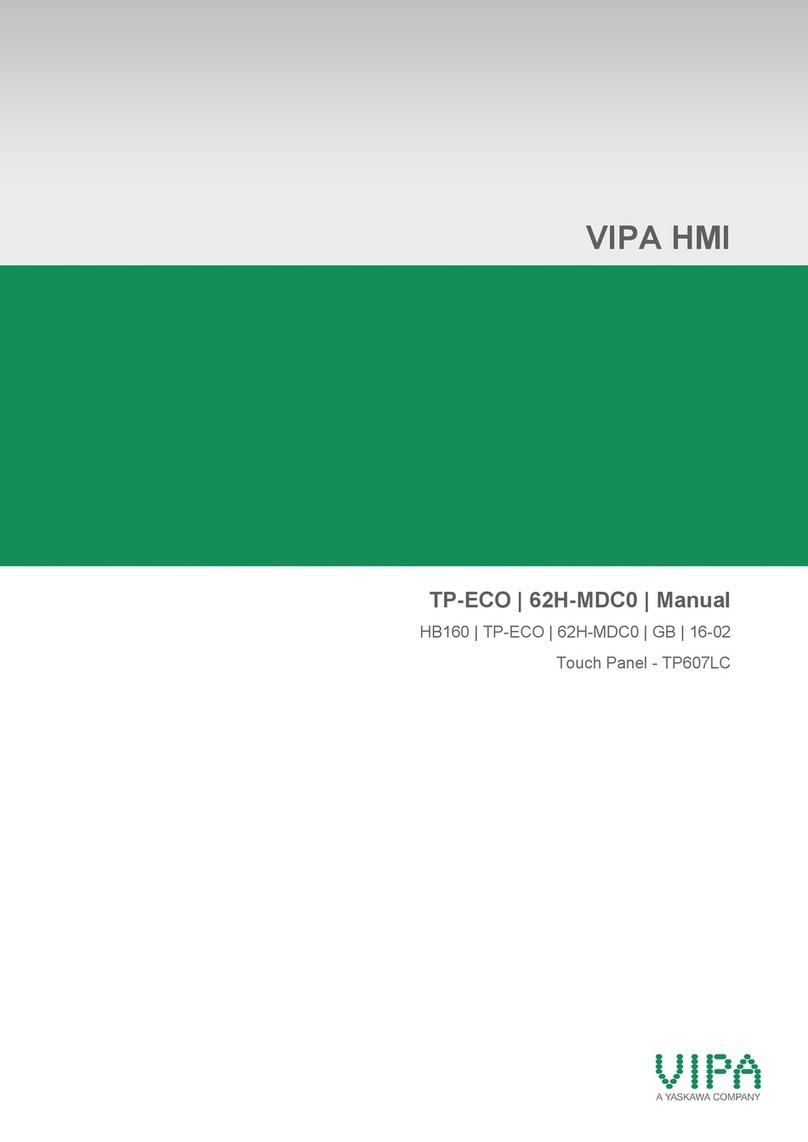
NSH5 Series
NSH5-SQ@10B-V2
Programmable Terminal
INSTRUCTION SHEET
Thank you for purchasing a NSH5-series Programmable Terminal.
Please confirm that you have received the correct product, and then
read this instruction sheet and be sure you understand the contents
completely before attempting to use the product.
For detailed information on specifications and usage, refer to the PT
and Support Software manuals.
Please retain this instruction sheet for future reference.
R
E
S
E
T
R
E
S
E
T
R
E
S
E
T
RUN
F6
F7
F8
F9
F10
F1
F2
F3
F4
F5
©OMRON Corporation 2010-2013 All Right Reserved. 2111272-5(
Safety Precautions
•
Definition of Precautionary Information
WARNING
Indicates a potentially hazardous situation
which, if not avoided, could result in death
or serious injury. Additionally, there may be
severe property damage.
Symbols
Prohibition
Indicates a general prohibition
Disassembly Prohibited
Disassembling any product may result in electrical shock
or other injury. Never attempt to disassemble any product.
Caution
Indicates general cautionary, warning, or danger level information
•
Safety Precautions
WARNING
Do not attempt to take the PT apart and do not touch any
internal parts while the power is being supplied. Doing
either of these may result in electrical shock.
Always ensure that personnel in charge properly perform
installation, inspection, and maintenance for the PT.
"Personnel in charge" refers to individuals qualified and
responsible for ensuring safety during machine design,
installation, operation, maintenance, and disposal.
Ensure that installation and post-installation checks are
performed by personnel in charge who possess a thorough
understanding of the machinery to be installed.
Do not attempt to disassemble, repair, or modify the PT.
Doing so may impair the safety functions.
Do not use the input functions of the PT, such as the
function switches or switches on the touch panel, in
applications that involve human life, in applications that may
result in serious injury, or for emergency stop switches.
Always connect the emergency stop switch and enabling
switch to safety circuits. Serious accidents may occur if a
malfunction occurs while the PT is connected to a PLC or
other controller.
⋅Do not use the function switches or switches on the
touch panel as input switches that may cause injury or
damage property.
⋅Install monitoring circuits or other devices in output
signals that may result in serious accidents.
⋅Construct the system so that switching of important
operations is performed in devices outside the PT.
For devices and components connected to the PT that affect
safety, use appropriate products meeting the required safety
level and safety category. System safety and the appropriate
safety category must be evaluated for the entire system.
Consult a certified third-party organization to determine the
appropriate safety category.
It is the user's responsibility to ensure that system safety
adheres to relevant standards.
Connect the emergency stop switch and enabling switch on
the PT so that they function according to stop category 0 or
1 described in IEC/EN 60204-1.
There are two types of switches on the PT, a red one for use
as an emergency stop switch, and a gray one for use as a
stop switch. Use each of these for its intended purpose.
⋅When using a PT with a red emergency stop switch,
attach the cable from the system securely so it cannot be
easily disconnected.
⋅When using a PT with a gray stop switch in an
application where the PT is detached from the system,
make sure that the emergency stop switch and the stop
switch can be clearly distinguished.
Precautions for Safe Use
•
When unpacking the PT, check carefully for any external scratches or other
damage.Also, shake the Units gently and check for any abnormal sound.
Install or hand-hold the NSH5 when operating it. Do not operate the
NSH5 on the floor or on a tabletop.
Do not let metal particles enter the PT when preparing the panel.
Use power supplies with reinforced or double insulation and minimal
voltage fluctuation for the NSH5 PT and for inputs to the PT, such as
emergency stop switches, enable switches, functions switches, and
station detection. The power supplies must be capable of maintaining
stable outputs for momentary power interruptions in the inputs to the
power supplies of up to 10 ms.
⋅ Rate power voltage: 24 VDC (Allowable range: 20.4 to 27.6 VDC)
⋅ Capacity: 10 W min.
Insert a 3-A fuse immediately after the secondary output from the power supply.
Do not connect an AC power supply to the DC power input terminals.
Do not perform a dielectric strength test.
Properly ground the PT to prevent malfunction due to noise.
Do not touch the surface of the circuit board or the components
mounted on it with your bare hands. Discharge any static electricity
from your body before handling the board.
When connecting the cable to the PT, make sure to secure the cable
and the PT. The tensile load on the cable must not exceed 60 N. Do not
place a higher load on the cable.
Turn OFF the power supply to the PT before connecting or disconnecting the cable.
Be sure to tighten the connector screws after connecting the cable.
The whole system may stop depending on how the power supply is turned ON
or OFF.Turn ON or OFF the power supply according to the specified procedure.
Thoroughly confirm operation of screen data, macros, and host pro-
gramming before starting actual use.
Do not perform the following operations while the Memory Card is being accessed.
⋅ Turning OFF the power supply to the PT
⋅ Removing the Memory Card
To ensure system safety, incorporate a program that periodically reads PT
operation bits from the host side to check that the PT is properly operating.
Press touch switches with a force of 30 N max.
Confirm system safety before pressing touch switches.
Do not accidentally press touch switches when the backlight is not lit or
when the display does not appear. Confirm the safety of the system
before pressing touch switches.
Do not press touch switches consecutively without pausing in between.
If touch switches are pressed consecutively at high speed, the PT may
not be able to detect the inputs. Confirm that the PT has detected the
input of a touch switch before pressing any other touch switch.
Before initializing screen data, confirm that existing data is backed up
at the CX-Designer.
When changing the password with the system menu, do not reset or
turn OFF the power supply until writing is finished. If the password is
not saved successfully, the screen may not operate.
When using the device monitor, confirm the safety of the system before
performing the following operations.
⋅ Changing monitor data ⋅ Changing operating modes
⋅ Force setting or resetting ⋅ Changing present values or set values
Never use volatile solvents, such as benzene or thinners, or chemical
dusters to clean the PT.
Dispose of the product and batteries according to local
ordinances as they apply. Have qualified specialists prop-
erly dispose of used batteries as industrial waste.
Do not connect a USB connector to any device that is not applicable.
Before connecting a USB connector to a device, check the external ap-
pearance of the device and make sure that the device is free from damage.
When mounting the battery, be sure to use the correct battery and
mount it correctly.
The backlight contains mercury for PTs with lot numbers before 3073.
Do not dispose of the PT together with other waste to be sent to a dis-
posal site. Dispose of the PT according to local ordinances as they ap-
ply.
